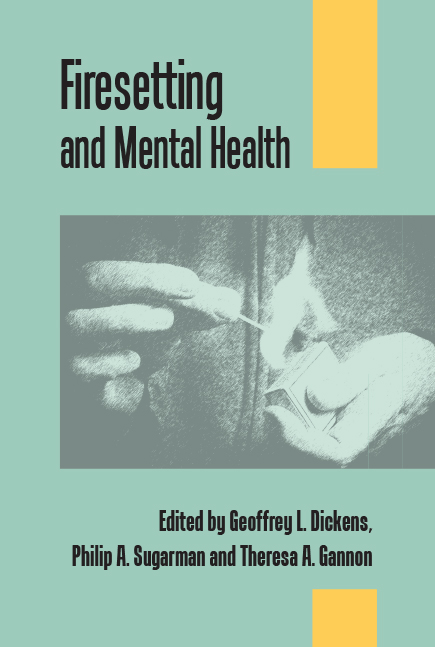Book contents
- Frontmatter
- Contents
- List of figures, tables and boxes
- List of contributors
- Preface
- Part I Theory and research
- 1 Adult firesetters: prevalence, characteristics and psychopathology
- 2 Theories on arson: the action systems model
- 3 Differentiating firesetters: lessons from the literature on motivation and dangerousness
- 4 The potential relevance of brain dysfunction in arson
- 5 The developmental aspects of firesetting
- 6 Intellectual disability and arson
- 7 Female arsonists and firesetters
- 8 Power and excitement in arson: the case of firefighter arson
- Part II Practice and law
- Index
7 - Female arsonists and firesetters
from Part I - Theory and research
- Frontmatter
- Contents
- List of figures, tables and boxes
- List of contributors
- Preface
- Part I Theory and research
- 1 Adult firesetters: prevalence, characteristics and psychopathology
- 2 Theories on arson: the action systems model
- 3 Differentiating firesetters: lessons from the literature on motivation and dangerousness
- 4 The potential relevance of brain dysfunction in arson
- 5 The developmental aspects of firesetting
- 6 Intellectual disability and arson
- 7 Female arsonists and firesetters
- 8 Power and excitement in arson: the case of firefighter arson
- Part II Practice and law
- Index
Summary
Understanding the aetiology of arson and firesetting and how to assess and treat individuals who deliberately set fires is a complex process that is still very much ‘work in progress’. However, as with most forensic issues, the research literature examining male individuals who set fires is substantially more developed than that focusing on females. To date, for example, review articles examining the concept of arson and firesetting either focus very little attention on females (e.g., Barnett & Spitzer, 1994; Smith & Short, 1995) or focus solely on males (Gannon & Pina, 2010). The main aim of this chapter is to provide a summary overview of what is currently known regarding women who set fires. It focuses on outlining the key characteristics and features of women who set fires, the aetiology of female-perpetrated firesetting, and the key treatment and risk issues. Where possible, the reported findings on women are compared with what is currently known about males who set fires and women offenders who do not set fires. Throughout this chapter, we generally use the term ‘firesetting’ to refer to any intentional lighting of fires, since ‘arson’ is an arguably narrow and legally constructed term that is unable to account for those whose firesetting remains unapprehended (e.g., firesetting in forensic psychiatry settings). Using the term ‘firesetter’ in relation to women may be especially important, since women appear to be treated more leniently than men by criminal justice officials, perhaps due to childcare responsibilities or other stereotyped preconceptions around females’ risk (Wilbanks, 1986; Steffensmeier & Demuth, 2006). Thus, many females who set a fire may not hold a conviction for ‘arson’ on record. However, taking into account clinical figures, professionals estimate that male firesetters outnumber females at a figure of around 6:1 (Stewart, 1993).
Key characteristics and features
Sociodemographic features
Many of the sociodemographic features noted in male firesetters who come to professional attention (see Gannon & Pina, 2010, for a review) are similar to those noted for females. For example, research suggests that female firesetters who come to professional attention – like other female offenders – are typically of low-average IQ (Tennent et al, 1971; Stewart, 1993; Noblett & Nelson, 2001), have low socioeconomic status and are poorly educated (Tennent et al, 1971; Harmon et al, 1985; Stewart, 1993; Wachi et al, 2007).
- Type
- Chapter
- Information
- Firesetting and Mental Health , pp. 126 - 142Publisher: Royal College of PsychiatristsFirst published in: 2017

